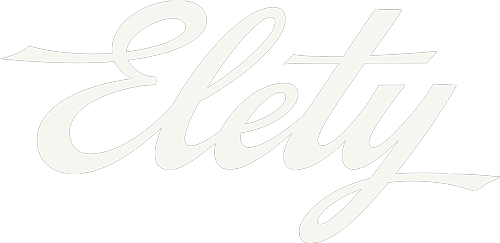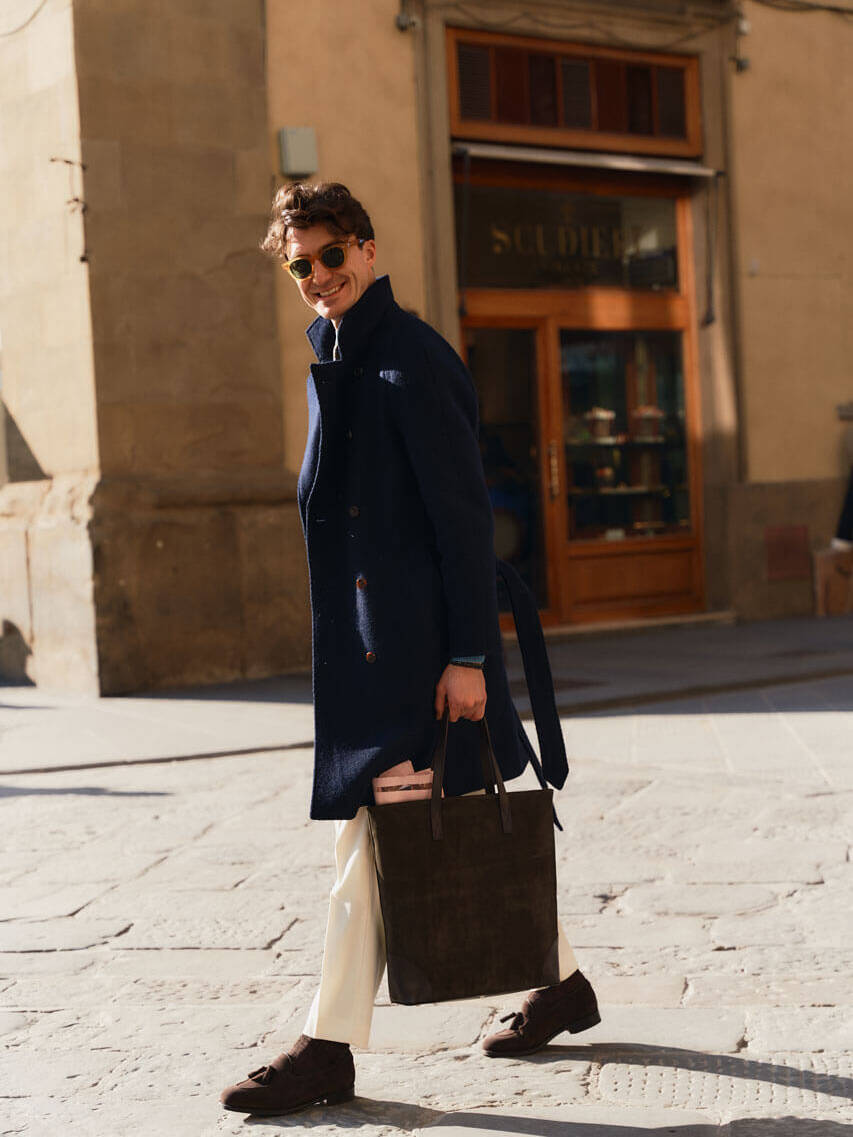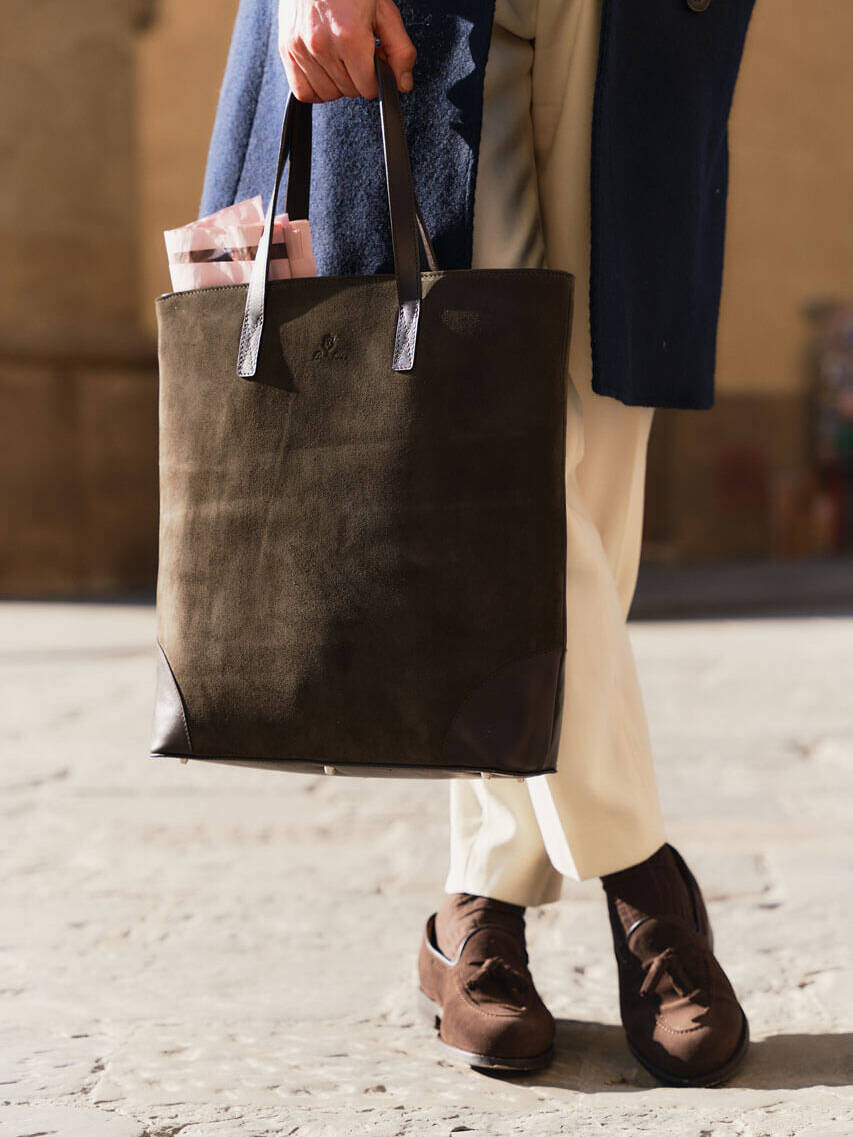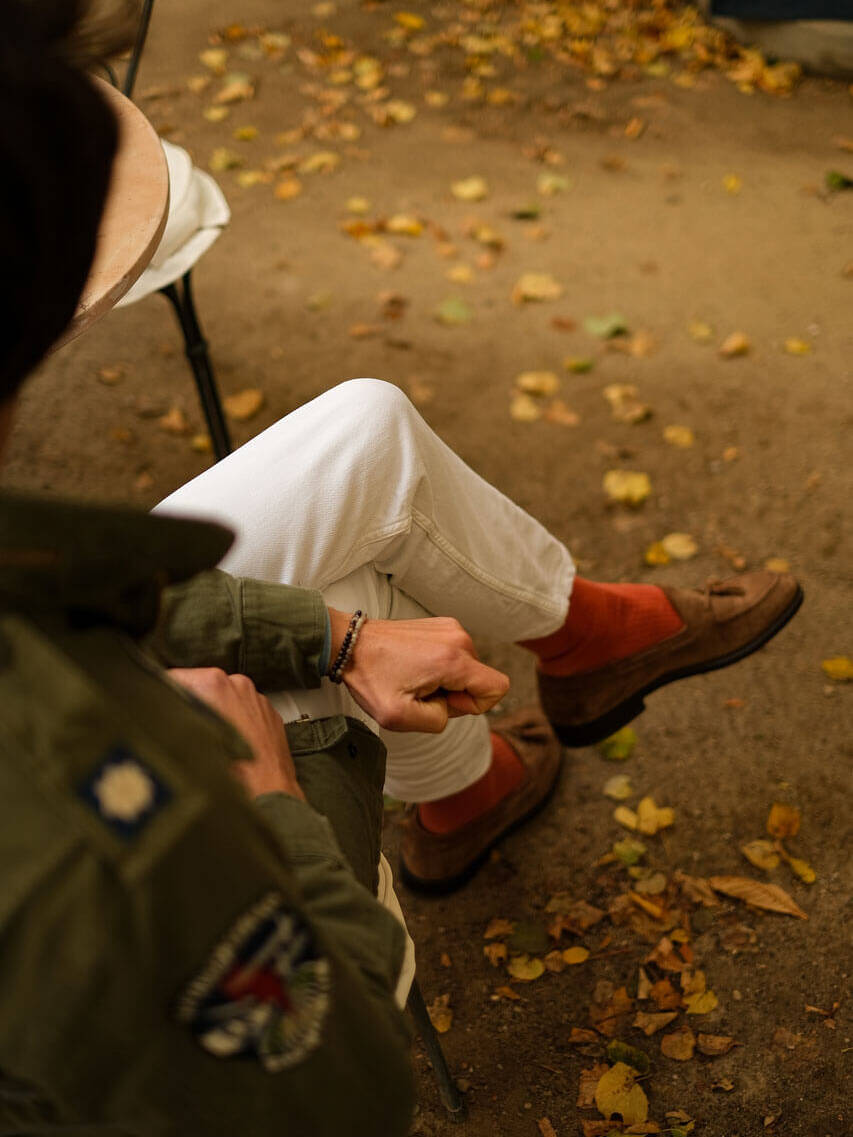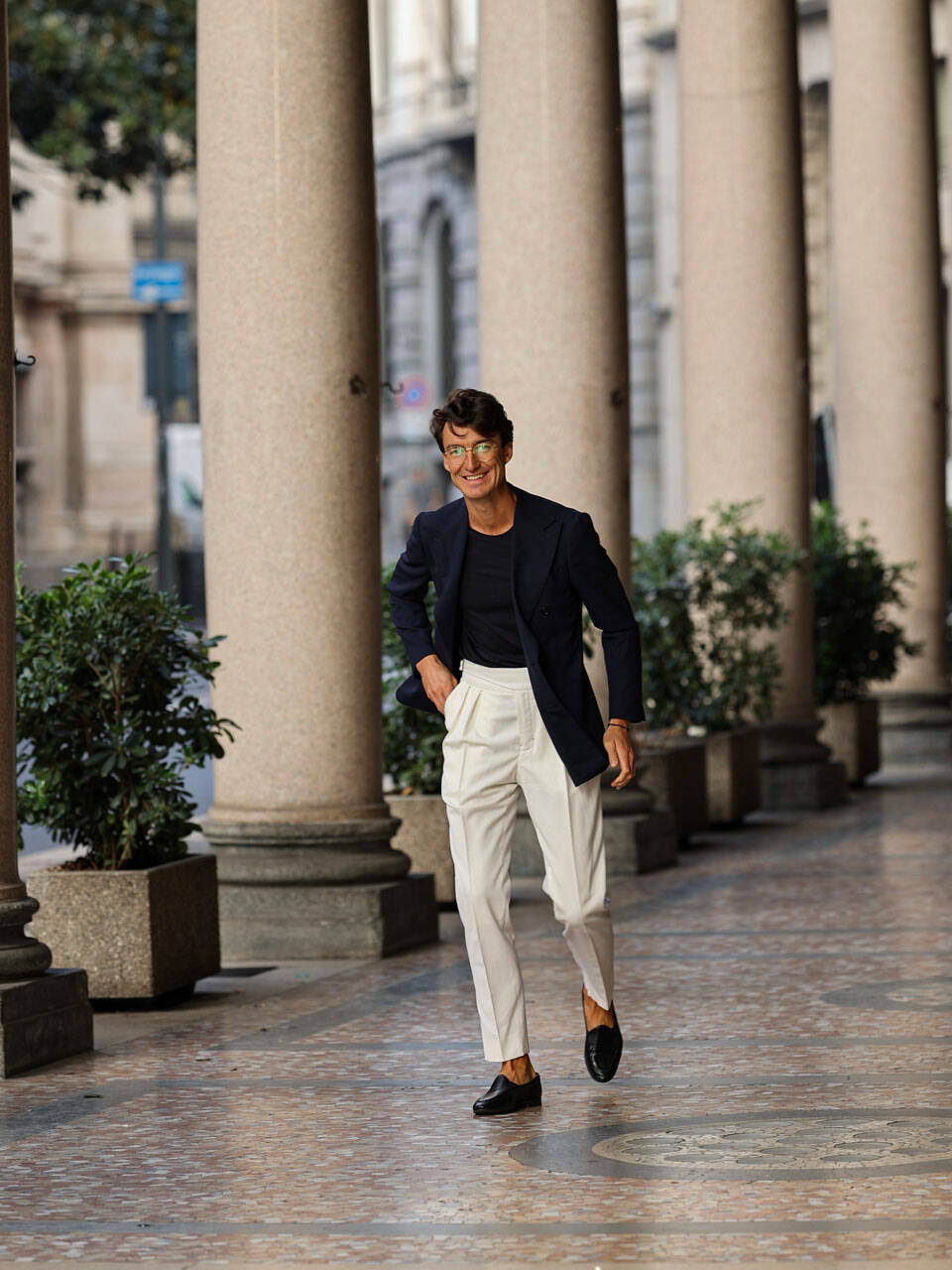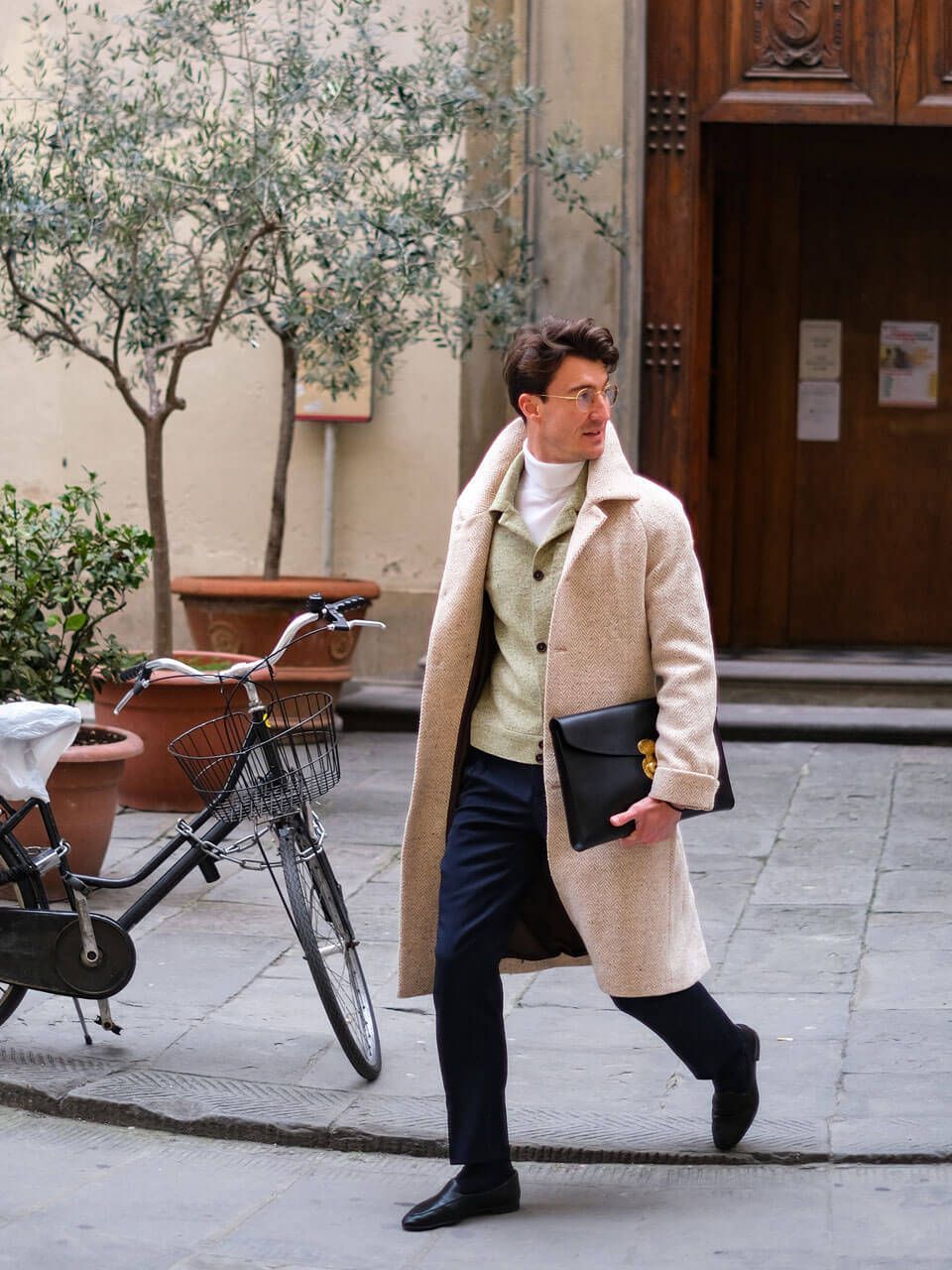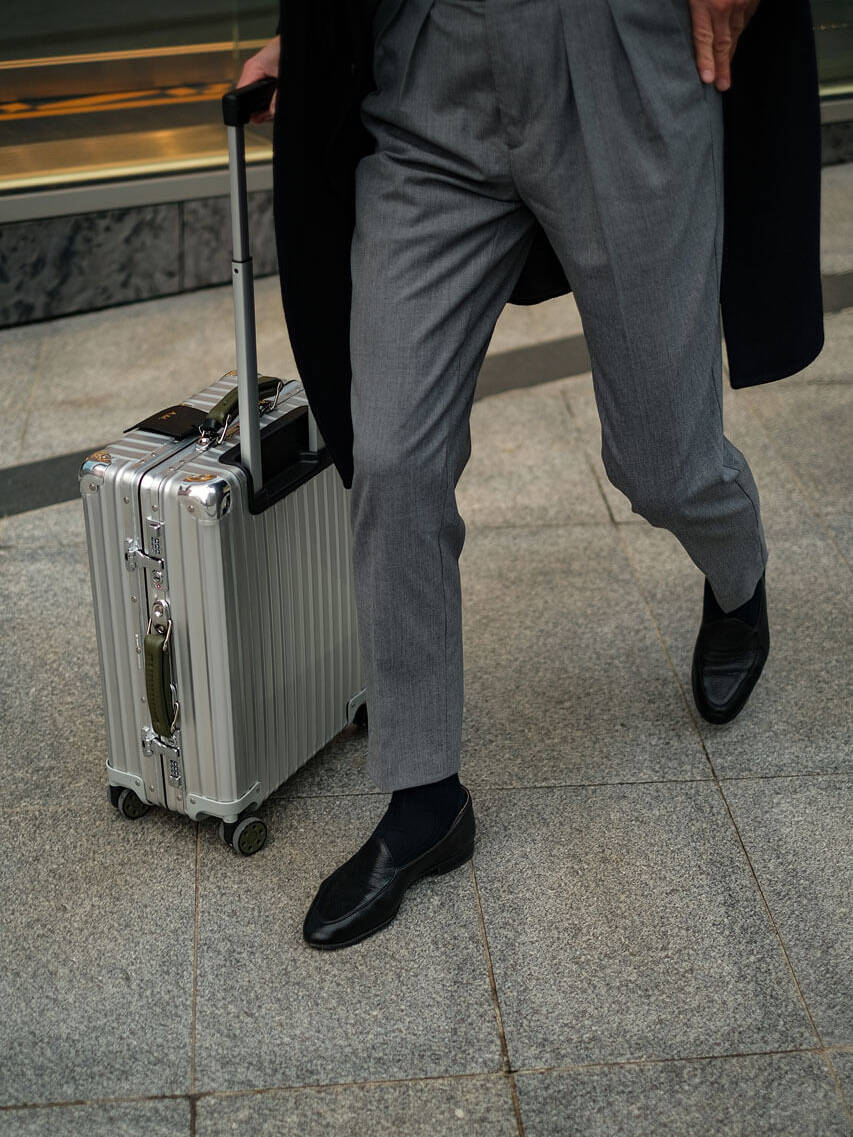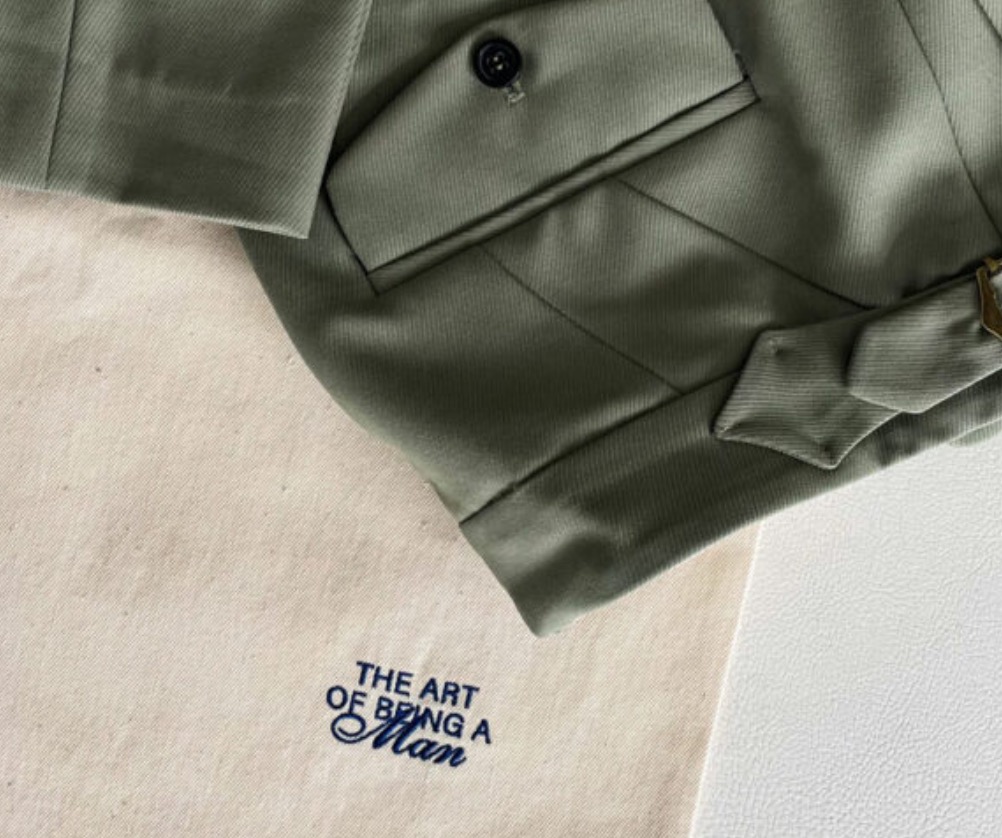Today, let’s explore the world of footwear, specifically loafers. We’ll dive into their history, variations, and I’ll share my experiences with my favorite loafers and how I like to pair them.
Among the various origin stories of loafers, two main ones stand out:
- They were invented in England as indoor slippers.
- A shoe model worn in Norway was designed with the idea of combining it with the footwear of Native Americans in America.
Wildsmith
It all began in 1847 in London when a factory specializing in boots for cavalry serving the British monarch emerged. The founders of the factory were Matthew and Rebecca Wildsmith. In 1926, almost 80 years later, King George VI of Britain commissioned Raymond Lewis, their grandson, to create shoes that would be comfortable for walking around a country house. The master crafted them with a small wide heel, a convenient cut, and without laces. These shoes were easy to slip on and off, resembling moccasins in design. Today, they are known as “Wildsmith Loafers.” Originally intended for indoor wear, they became popular for outdoor strolls.
Aurland
In 1930, at a footwear exhibition in the Norwegian town of Aurland, a new loafer model with heels, created by Nils Tveranger, was introduced. After spending seven years in North America mastering the art of shoemaking, he returned to Norway. These shoes were later named “Aurland Moccasin.” Heeled moccasins gained popularity across Europe. Among the American tourists who loved traveling in the Old World was an Esquire magazine employee. He bought a pair of these shoes and brought them to America. The Spalding family from New Hampshire then organized the production of an exact copy of the Aurland moccasins, renaming them loafers.
Types of loafers
Penny
In 1936, the G.H.Bass shoe factory released their version of the famous shoes, featuring a small detail – a strip of leather stitched on top with a diamond-shaped cutout. According to legend, this cutout could hold a penny. They were named “Penny Loafers” and over time became a classic.
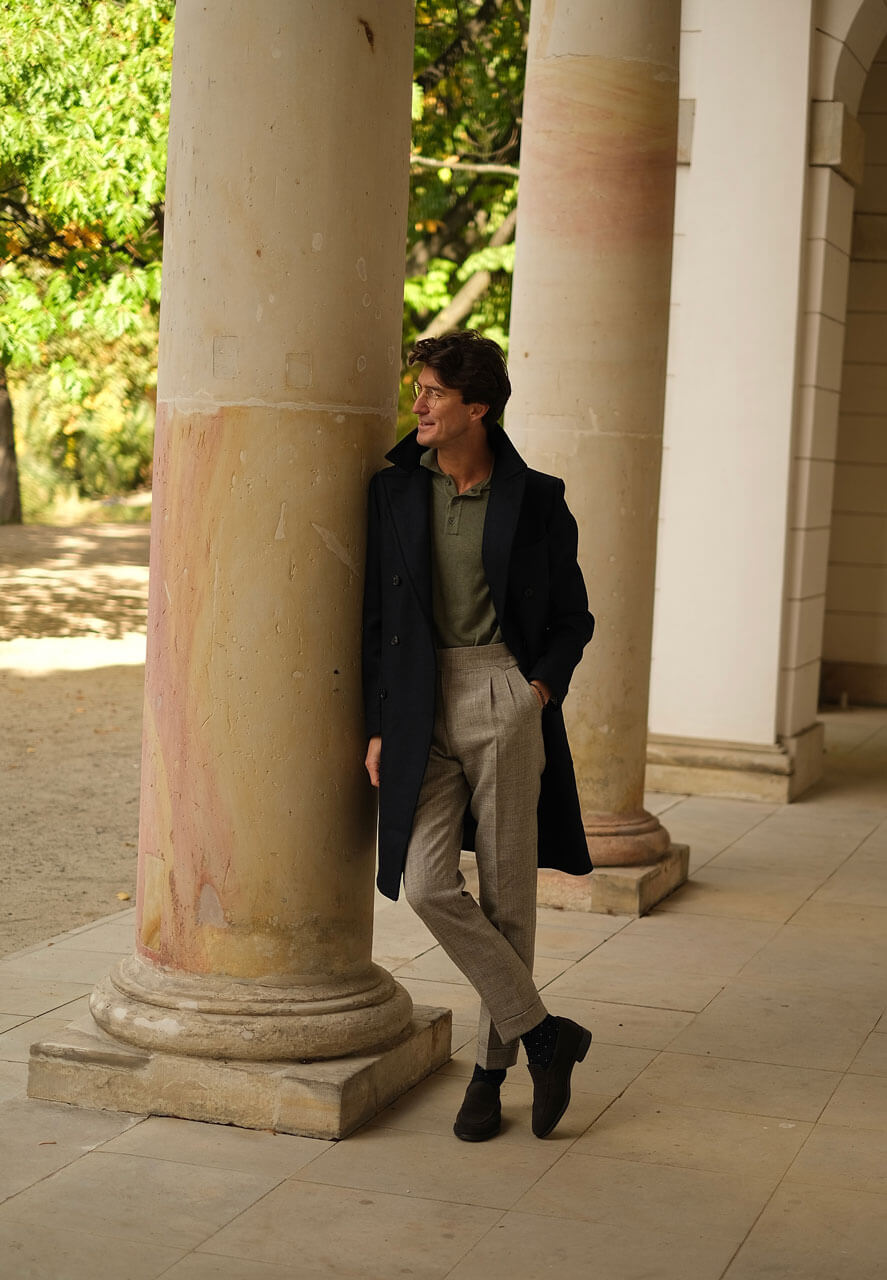
Tassel
According to some accounts, American actor Paul Lucas, who visited Europe after World War II, brought back half-shoes (oxfords) adorned with tassels. At his request, the Alden Shoe Company released similar footwear that became popular in the United States.
Belgian Loafers
In 1954, Henry Grendel acquired two old shoe factories, thereby saving the shoe industry in Belgium. In 1956, Grendel established the production of men’s and women’s loafers, which enjoyed incredible demand. Their distinctive features included a soft sole, a small bow, unusual materials, and unexpected color solutions.
Gucci
In 1966, loafers reached their peak when renowned Italian stylist Guccio Gucci turned his attention to them. He presented a new design, adding a tassel that became their signature. Changing the lines and introducing other details, he presented them in black.
My choice and recommendation
The shoes became classic, gaining even more admirers not only overseas but worldwide. In the 1970s, this model firmly entered the wardrobe of the wealthiest individuals on Wall Street. In 1985, they became a permanent exhibit at the Metropolitan Museum in New York.
I was about to write that my favorite model is the Tassel loafers when I realized that I already have Penny loafers in my wardrobe, and I also added Belgian loafers. If I take 100% of my footwear, 60% is loafers, all made of suede leather. I also added Penny loafers (to have a place to insert a penny for good luck, as students used to do 😅). Last year, I added Belgian loafers in black made of regular leather. Suede Tassel loafers are incredibly versatile and less formal than Pennies. I wear them with trousers with double pleats at a high waist. I can also comfortably wear them with a suit, and thanks to such footwear, I can relax the look and not appear too formal. They pair well with my favorite jeans and chinos. On top, I can easily mix them with a shirt or more formal pieces from my wardrobe, such as a long-sleeved polo, cardigan, or blazer. In warmer weather, I can wear them with a basic t-shirt, shirt, or polo, and at the bottom, they go well with trousers, jeans – creating a cohesive look. Only one pair of Belgian loafers in my collection is black. I deliberately bought them to add a new accent to my wardrobe, introducing black accessories and items. The rest of my loafers are made of suede leather, and I’m very pleased with them.
Regarding caring for such footwear and footwear in general, I wrote in a previous post. Caring for such shoes is crucial. If you were to ask me what shoes to buy, I would definitely tell you without hesitation, go for loafers. Most likely, I would even recommend Tassel loafers, but for that, I would need to know your style and preferences. After all, we don’t just buy things; we create and convey ourselves through them!
Fact in the Spotlight
On advertising posters and in store showcases, clocks often display the time as 10:10. This makes the watch face more visible, and the clock hands form a “smile” – something that subconsciously appeals to customers.
Quote of the Week
Hard times create strong men, strong men create good times, good times create weak men, and weak men create hard times.
G. Michael Hopf
That’s all for today. See you on Saturday next week.
Yours sincerely, Anton Masko
